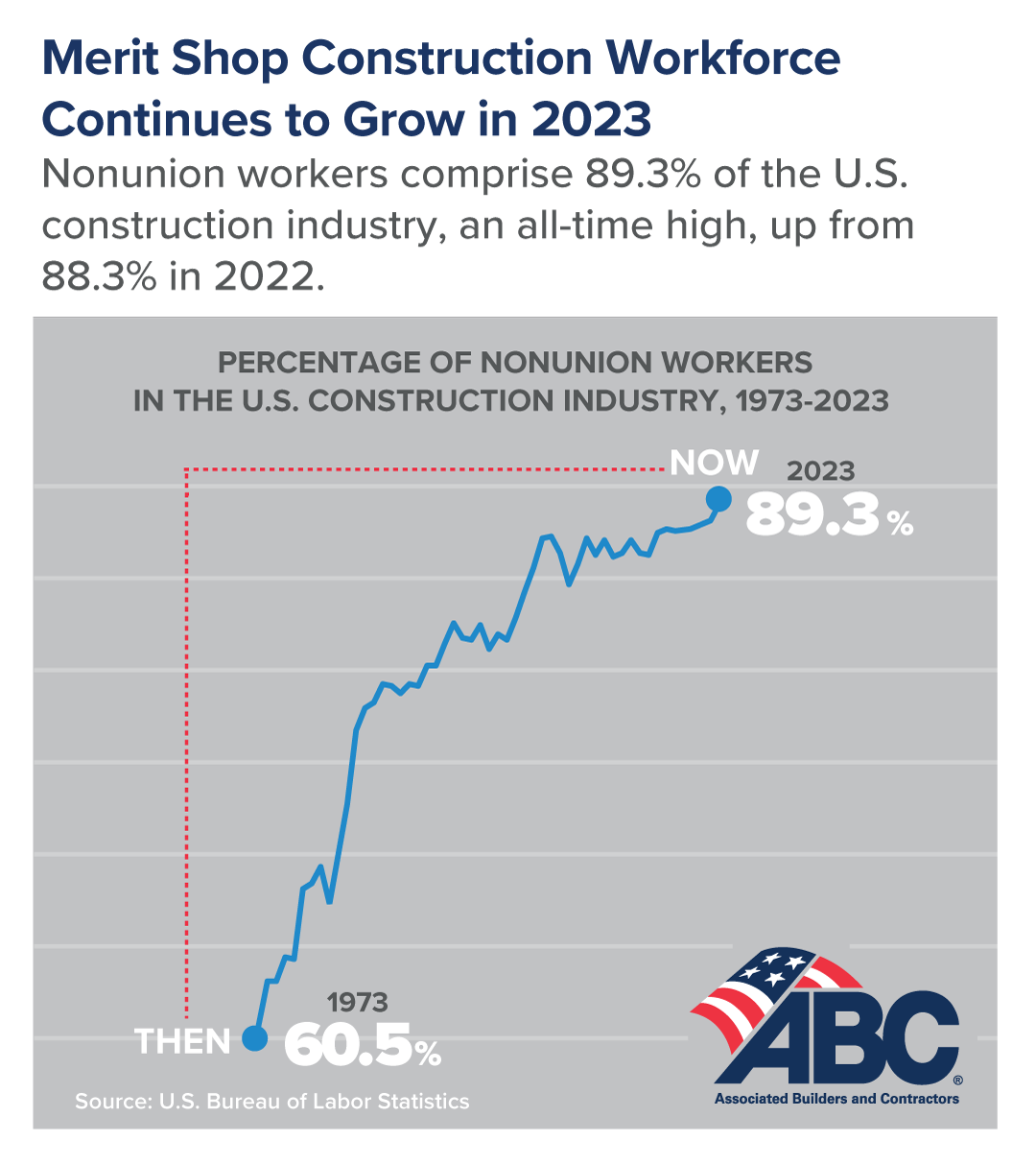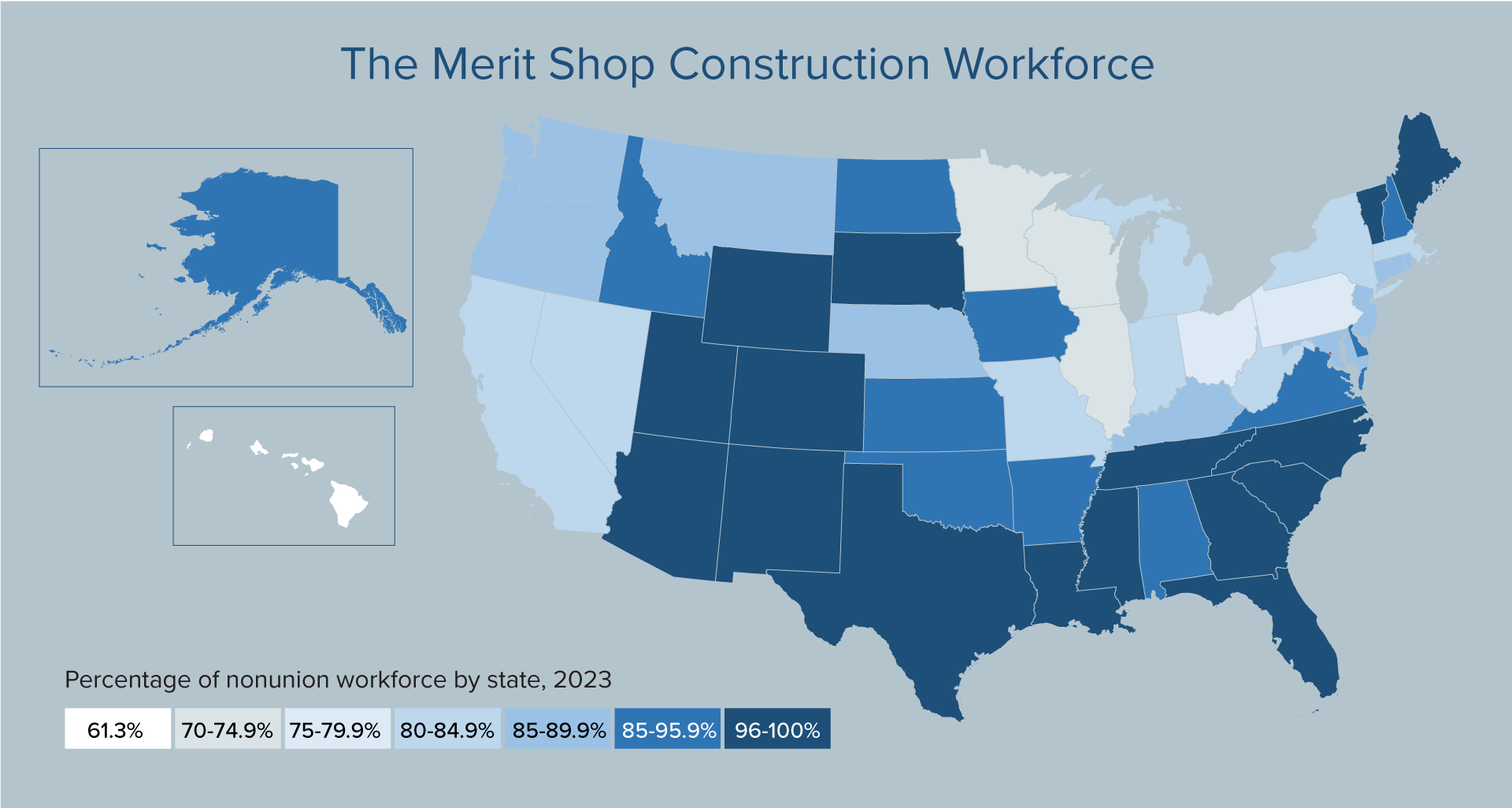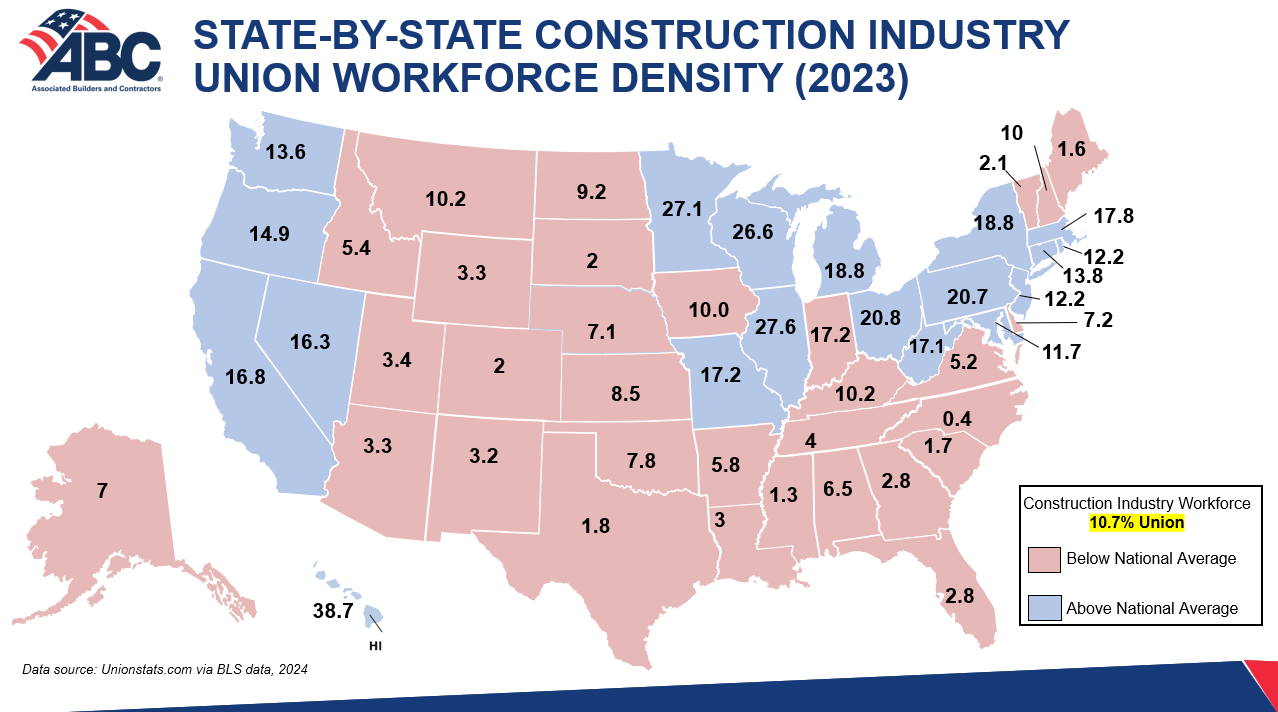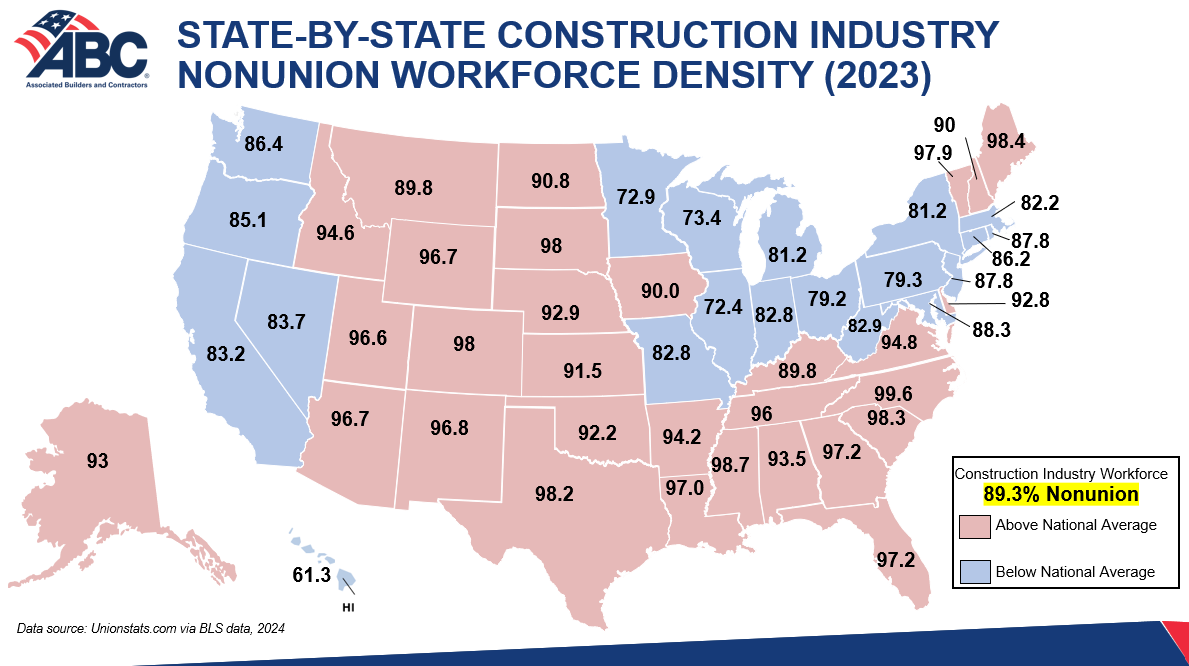BLS: A Record 89.3% of the U.S. Construction Industry Is Not Part of a Union
According to an Associated Builders and Contractors analysis of the U.S. Bureau of Labor Statistics’ 2023 Union Members Summary released Jan. 23, 2024, a historic low of 10.7% of the construction industry belongs to a union, a decline from 11.7% in 2022.
BLS reports that 7.9 million construction workers were not members of a union in 2023. Additionally, ABC found that there has never been a smaller percentage of union members in the construction industry since the BLS began tracking this data in 1973.
“The BLS data suggests that the Biden administration’s numerous policy schemes benefiting construction unions has not been enough to reverse steady declines in union market share,” said ABC Vice President of Regulatory, Labor and State Affairs Ben Brubeck. “In contrast to the Biden administration’s promotion of exclusionary and inflationary policies supported by organized labor, all qualified contractors should be—and clearly want to be—encouraged to build and rebuild taxpayer-funded infrastructure and upskill their workforce. However, anti-competitive regulations like the final rule mandating corrupt project labor agreements on federal construction contracts, the controversial proposal overhauling the government-registered apprenticeship system, the costly and burdensome final Davis-Bacon rule and the confusing independent contractor final rule are only stifling that potential and further exacerbating the industry’s labor shortage. The president would add more value to the industry and level the playing field for all contractors to compete by creating inclusive, win-win policies that reflect the choice of industry workers not to affiliate with a union.”

Construction unions lost 65,000 members, decreasing from 1.019 million members in 2022 to 954,000 members in 2023. That’s despite BLS data showing that the construction industry grew by 249,000 workers, from 8.671 million in 2022 to 8.920 million in 2023. This decline is notable because there was a slowdown in the residential construction market traditionally dominated by nonunion workers and it appears that new entrants into the industry are declining union membership at a greater rate than unionized workers exiting the industry and/or dropping union membership.
Union membership as a percentage of the construction industry has steadily declined throughout the last 75 years. In 1947, approximately 87% of its workforce was unionized. During the lowest point of the construction industry’s recession in 2010, just 801,000 construction industry workers belonged to a union (13.1%), the smallest number of union members in recent history.
According to additional ABC analysis of 2023 state union membership data published by UnionStats.com, at least 90% of workers in the private construction industry do not belong to a union in 29 states. That’s up from 26 states in 2022 and 24 states in 2021.

State-specific union membership information for various U.S. industries, including the construction industry, is available at unionstats.com. (See I. Historical Tables: Union Membership, Density and Employment; By Sector and State: 1983-2023). Unionstats.com data was used to populate the following state maps of construction industry union and nonunion workforce density for 2023 (available via PowerPoint).


Construction unions typically shrug off any bad news from the BLS’s annual union membership report. They note that BLS data includes several occupations that aren’t usually unionized into its construction industry category, such as office workers, project managers, estimators and architects, which drags down the overall construction industry union density figure. They point to their research which says closer to 18% of construction craft workers are unionized. They maintain that number goes up to 30% once the primarily nonunion residential construction craft workforce is removed. Of course, they fail to acknowledge that an entire company’s workforce (craft, office and management) suffers when nonunion company’s are boxed out of opportunities to bid on public works projects via pro-union requirements like PLAs and their ilk. They also fail to acknowledge that nonresidential construction workforce seeks employment on commercial construction projects when the residential construction market is slow, as certain skills are transferable, and vice-versa.
In addition, they point to growing approval of all unions in public opinion polling and decry efforts by employers to block employee unionization. Of note, the construction industry workforce has one of the lowest barriers to unionization of any industry. Nonunion construction workers can go to any local union hiring hall specific to their trade and apply for membership. If they are accepted, they are dispatched to union-signatory contractors and are compensated at the collectively bargained rate of pay minus deductions for union dues, fees and union benefits programs. In short, if the product of union membership is attractive, the majority of craft workers would be joining unions (buying the product as consumers). Instead, the government is trying to coerce workers to affiliate with unions in a raw distortion of the free market and worker choice.











